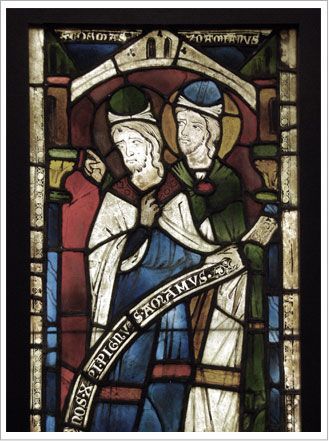St. Joseph Parish
153 SOUTH FRANKLIN STREET HOLBROOK, MA 02343
781-767-0605
St. Michael Parish
87 N MAIN ST, AVON MA 02322
781-767-0605
How Does the Church Recognize Saints?
The word “relic” comes from the Latin “reliquiae” which refers to some object, notably part of the body or clothes, which remains as a memorial of a departed saint. A relic can either consist of the physical remains of a saint or the personal effects of the saint. The veneration of relics is not exclusive to Christianity but has been in use by many different cultures and religious systems. For Catholics, relics help us to honor the saints and to help keep us connected to those men and women who are our heroes in faith. The Church altar, which is the center of worship for sacred liturgy, contains a saintly relic. Also, many cures and miracles are attributed to relics, not because of their own power, but because of the holiness of the saint they represent.
Teaching of the Church on Relics
From the Directory on Popular Piety and the Liturgy (2001)
Congregation for Divine Worship and the Discipline of the Sacraments:
236. The Second Vatican Council recalls that "the Saints have been traditionally honoured in the Church, and their authentic relics and images held in veneration"(323). The term "relics of the Saints" principally signifies the bodies - or notable parts of the bodies - of the Saints who, as distinguished members of Christ's mystical Body and as Temples of the Holy Spirit (cf. 1 Cor 3, 16; 6, 19; 2 Cor 6, 16)(324) in virtue of their heroic sanctity, now dwell in Heaven, but who once lived on earth. Objects which belonged to the Saints, such as personal objects, clothes and manuscripts are also considered relics, as are objects which have touched their bodies or tombs such as oils, cloths, and images.
237. The Missale Romanum reaffirms the validity "of placing the relics of the Saints under an altar that is to be dedicated, even when not those of the martyrs"(325). This usage signifies that the sacrifice of the members has its origin in the Sacrifice of the altar (326), as well as symbolising the communion with the Sacrifice of Christ of the entire Church, which is called to witness, event to the point of death, fidelity to her Lord and Spouse.
Many popular usages have been associated with this eminently liturgical cultic expression. The faithful deeply revere the relics of the Saints. An adequate pastoral instruction of the faithful about the use of relics will not overlook:
- ensuring the authenticity of the relics exposed for the veneration of the faithful; where doubtful relics have been exposed for the veneration of the faithful, they should be discreetly withdrawn with due pastoral prudence(327)
- preventing undue dispersal of relics into small pieces, since such practice is not consonant with due respect for the human body; the liturgical norms stipulate that relics must be "of a sufficient size as make clear that they are parts of the human body"(328)
- admonishing the faithful to resist the temptation to form collections of relics; in the past this practice has had some deplorable consequences
- preventing any possibility of fraud, trafficking(329), or superstition.
The various forms of popular veneration of the relics of the Saints, such as kissing, decorations with lights and flowers, bearing them in processions, in no way exclude the possibility of taking the relics of the Saints to the sick and dying, to comfort them or use the intercession of the Saint to ask for healing. Such should be conducted with great dignity and be motivated by faith. The relics of the Saints should not be exposed on the mensa of the altar, since this is reserved for the Body and Blood of the King of Martyrs (330).




